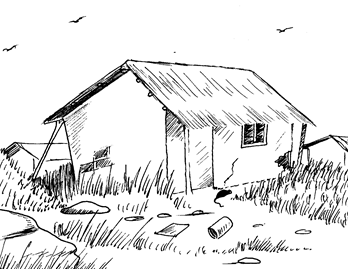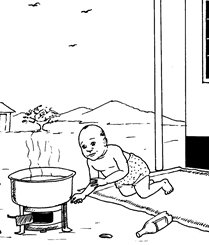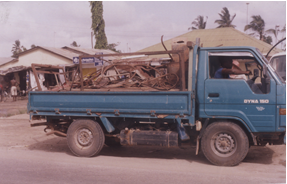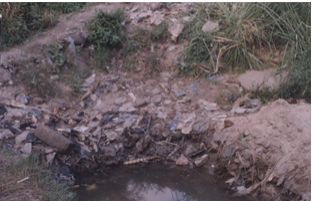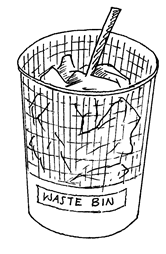JOIN US WHATSAPP
CLICK HERE
JOIN US TELEGRAM
CLICK HERE
TOPIC 2: SAFETY IN OUR ENVIRONMENT
First Aid
First Aid is an immediate help which is given to a sick or injured person before sending him/her to the hospital for further treatment.
FIRST AID KIT
Importance of First Aid
- Saves life
- Reduces fear of death
- Brings hope and encouragement to the patient
- Relieves the victim’s pain
- Prevents the illness or injury from becoming worse
- Helps a person to recover from shock
- It shows spirit of helping each other.
Components of the First Aid Kit and their Uses
Identity components of the first aid kit and their uses
First Aid kit is a small box which is used to keep instruments and chemicals for First Aid. The first Aid kit should be placed in a safe and accessible place.
Components of the First Aid kit
- A pair of scissors
- Gauze
- Assorted bandages
- Adhesive plasters
- Cotton wool
- New razor blade
- Gentian violet (GV)
- Petroleum jelly or Vaseline
- Safety pins
- Iodine tincture or spirit
- Soap
- Anti-pain (pain killers) e.g. Panadol
- Sterilized forceps and pins
- Liniment
- A pair of tongs
- Antibiotic solution
Uses of the instruments and chemicals in the First Aid kit
- A pair of scissors:is used for cutting dressing materials such as gauze, bandages·
- Gauze:is used to cover the wound to prevent dirt and micro-organisms from entering.
- Assorted bandages: are used for securing an injured part in order to protect and support it.
- Adhesive plaster:are used for covering minor wounds/cuts and grazes·
- Cotton wool:is used for cleaning and drying wounds and applying medicine·
- New razor blade:used for cutting any flaps of skin when cleaning the wound.
- Gentian Violet (GV):is used as an antiseptic to clean wounds.
- Petroleum jelly or Vaseline:used for treatment of burns
- Safety pins:used for holding/securing bandages.
- Iodine tincture or spirit:used for cleaning wounds to reduce bleeding.
- Soap:is used for washing wounds, hands and medical facilities.
- Anti-pain (pain killers):used to reduce pain.
- Sterilized forceps and pins:are used for removing splinters and grit from wounds.
- Liniment:used to reduce muscle pains.
- A pair of tongs:used for holding pieces of bandages when cleaning the wounds.
- Antibiotic solution:is used for applying in the wounds for killing micro-organisms.
FIRST AIDER
The First Aider is a specialist who gives first aid.
Qualities of the first Aider
- She/he should have ability to assess the problem and give immediate and appropriate help.
- She/he must be able to act quickly, quietly, calmly
- She/he should be sympathetic to the victim
- She/he should be able to recognize dangerous signs and give immediate help for example detecting immediately if -breathing has stopped or is failing -there is severe bleeding-poisoning-fractures
- She/he should be able to help the injured person without unnecessary movement
Precautions to be observed by the First Aider
The First Aider should keep himself/herself safe to avoid dangers from the patient. Some of the dangers that s/he may face include infection by pathogens such as viruses and bacteria.So they should:
- Wear protective gloves to avoid contact with blood
- Wear eye protection
- Wear masks and gowns.
First Aid can be rendered to the victims of
- Drowning
- Muscle cramps
- Bleeding
- Poisoning
- Hiccups
- Suffocation
- Bruises Fainting Burns Sprain Bone fracture Snake bite
Procedures of Giving First Aid to Various Victims
Outline procedures of giving first aid to various victims
SNAKE BITES
A poisonous snake has two fangs one on each side of the upper jaw. The fangs are as sharp as needles. At the root of the fang there is a poison gland. When the snake strikes, it jabs downwards hitting the skin with its fangs and releases a few drops of venom.
Venom is the poison of the snake The action of striking forces the poison out and injects into the victim’s skin.
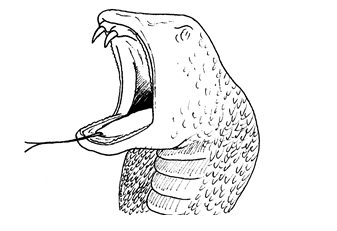
Sign and symptoms
- Immediate pain and swelling after the bite
- The skin becomes purple One or two punctured points may be seen where the fangs passed through the skin
SCORPION BITE
Scorpions are armed with a single curved stinger in the tail. Through this, they inject powerful venom that may produce convulsions and temporary paralysis.
The affected area feels as though is had been burned with a hot spark
How to give first Aid to a victim of scorpion bite
- Apply tourniquet
- Put ice on the injured area to relieve pain and prevent spread of the poison
- Treat for shock
- Rush the person to the hospital
DOG BITE
When someone is bitten by a dog, keep the dog under observation to see whether it has rabies. Rabies is one of the worst diseases known. It is caused by a virus which is present in the saliva of the infected animal.
If the animal has rabies, it will become restless, excitable, refuse to eat and barking tone will change. Later the dog then starts barking excessively.
How to help a victim of dog bite
- Wash your hands well with soap and water
- Wash the wound thoroughly with soap and water to remove the animal’s saliva using running water.
- Cover the wound with clean gauze.
- Bandage it carefully
- Take the victim to the hospital.
INSECT BITES
- Spider bites : Some spiders have a harmless venom to man. But the black spiders can be dangerous to man. The injured person becomes weak and dizzy, feels nauseated and the muscles of the stomach may become hard especially in children.
- Black and fire ants, bees : When a person has been stung by e.g. bees, severe pains are felt immediately.The person may be shocked, itching and swelling may follow.
A victim of spider bite can be helped by sending him/her to the hospital.
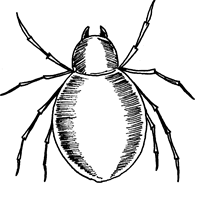
How to help
- Remove the insect’s sting
- Apply household ammonia and ice cubes
- Treat for shock
CHOCKING
Choking is caused when food or a foreign object becomes lodged in the windpipe.
Have you ever been with a person who is chocking? Did you know what to do?
When you are with a person that is chocking, first notice if person can talk, breath or cough. If so stay with that person until the air way is cleared by coughing.
Caution: Do not try to slap the person on the back. The slapping may cause the food to become more deeply ledged in the wind pipe.

If a person cannot talk or cough and appears to have a difficult in breathing, apply quick abdominal thrusts i.e. Heimlich maneuver as follows;
- First stand behind the chocking victim
- Put your arms around the person, placing your firsts just below the breast bone as shown above.
- Give a series of quick, sharp upward and inward thrusts
These thrusts push in on the diaphragm and the thoracic cavity suddenly decreasing its volume.
Air pressure is exerted below the obstruction which projects it forcefully from the windpipe.
POISONING
A poison is any substance which can loss of one’s life or seriously endanger health when taken into the body.
In every household there are different kinds of things which are poisonous. Some are deadly even on a very small dose. Others may be more or less harmless when taken in small quantities.
Examples of poisonous substances at home are kerosene, disinfectants, paints, medicines, artificial fertilizers, etc.
First aid to poisoning
- Look for the poison
- Identify the poison
- Neutralize the poison by giving the victim plenty of milk to drink or egg white or water.
- Induce vomiting if the poison is not strong acid or alkali as these are corrosive substance.
- If the problem is severe, rush him or her to the hospital.
BONE FRACTURE
A person with a bone fracture experience the following;
- Severe pain around the injured part
- Lack of movement
- Swelling
- Fainting or shock
How to help
- Treat for a shock
- Keep the patient absolutely quite
- Prevent further damage to injured part by using a splint.
BONE DISLOCATIONS
These are bones which have come out of place at a joint.
How to help
- Bring the bone back into fixed position
- Bandage it firmly in place so that it does not slip out again
SHOCK
Shock is a sudden violent disturbance of the mind or emotion
Causes of shock
- Bad news
- Severe illness
- Heavy bleeding
- Dehydration
- Severe burns
- Accident
Ways of preventing shock
- Lie down the person with his feet higher than his head
- Loosen the belt and shoes
- If the person is conscious give him some tea or any soft drink.
- Treat his/her wounds if any
- Stop any bleeding Keep the person warm if he/she feels cold
ELECTRIC SHOCK
How to help
- Switch off the electricity immediately
- If not possible to switch off the electricity, take the victim away from the source of electricity using a dry wooden material or rope.
- Loosen any tight clothes
- If the person is unconscious, apply mouth to mouth respiration
- Treat for shock
- Take the person to the hospital immediately
BRUISES
A bruise is an injury beneath the skin. Bruises can be identified by pain, swelling or a mark under the skin.
How to treat bruises
- Wash your hands using water and soap
- Wash the bruised part
- Apply cold clothes or ice immediately to reduce pain and swelling
- If swelling continues take the victim to the hospital
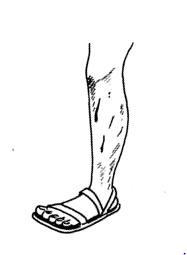
VOMITING
Vomiting is an involuntary ejection of substance from the stomach through the mouth.
Possible causes of vomiting
- Allergic reactions
- Diseases e.g. malaria
- Physiological condition e.g. pregnancy
- Food poisoning
- Unpleasant smell or taste
- Drinking a lot of water when thirsty.
How to help
- Give the person a rehydration drink or oral rehydration salts solution.
- Allow the person to have a complete rest
- If vomiting continues, take the patient to the hospital.
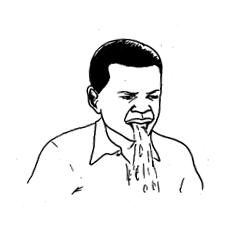
MUSCLE CRAMPS
Muscle cramps occur as a result of uncontrolled muscle spasms and contraction.
How to help
- Lay the victim down
- Massage the cramped area gently
- Apply some anti-cramp ointment to the affected area
- If the problem persists seek for a medical help
Muscle cramp can cause;
- Severe pain
- Loss of movement
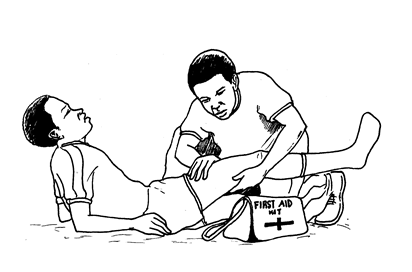
DROWNING
Drowning is a situation where someone has stopped breathing due excessive drinking of water following sinking into water.
Offering first aid to a drowned victim
- Lay the person on his back and tilt his head backwards so that his mouth falls forward
- Pull the tongue forward.Use a dry cloth to hold the tongue.
- Hold his nose close with your fingers
- Carry out mouth to mouth breathing by blowing gently into the person’s mouth about 30 times a minute but do not blow too hard.This process is called artificial respiration.
- Keep the person warm.
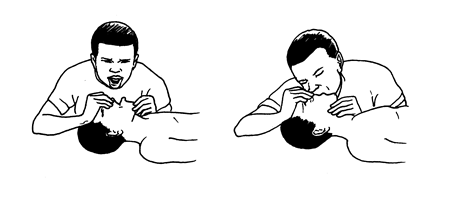
FAINTING
Fainting is caused by a temporary fall in the blood supply to the brain, sometimes brought on by emotional shock or prolonged standing.
How to help
- Keep the victim lying down with his/her legs raised in order to maintain blood pressure in the brain.
- Do not try to warm the victim.
- Loosen any tight clothing around the neck, chest and waist.
- Supply the patient with plenty of fresh air by fanning or mouth to mouth respiration.
- If there is no improvement rush the victim to the hospital.

BLEEDING
How to help the victim
(a) Severe cuts
- Severe bleeding with blood flowing out rapidly must be stopped at once by pressing with fingers directly on the wound or pressing the edges of the wound together.
- Lay the victim down.
- If the wound is in a limb raise it provided it is not fractured.
- When the bleeding has slowed down press a pad of material over the wound and tie it rapidly in place.
- If blood oozes through, apply more material on top of the original pad.
(b) Simple cuts
- Wash your hands well by using soap and water
- Wash the wound
- Cover the wound with clean dressing dipped in iodine solution and bandage the wound
(c) Nose bleeding Bleeding usually occurs near the tip of the nose. The bleeding may be a result of diseases such as
- High blood pressure
- Rheumatic fever Or
- Injury
Nose bleeding is also likely to occur at high altitude as a result of cold.
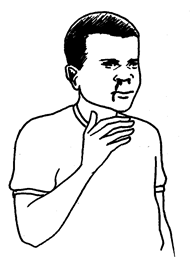
A nose bleeding victim
How to help
- Let the victim sit quiet. This makes the heart beat to slow down and hence reduces bleeding.
- Let the victim lean the head slightly backward or make him/ her lie down on his/ her back.
- Press on the side of the nose where the blood is flowing for about 10 minutes.
- Allow the victim to breath through the mouth
- Apply cold, wet compression over the nose and face. If this does not work take the victim to the hospital
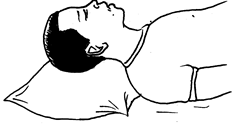
The right position to offer first aid to a nose bleeding victim
BURNS AND SCALDS
A burn is caused by dry heat e.g. flame of hot object. A scald is caused by a steam or boiling water. The treatment is the same for both burns and scalds except that in scalds any wet clothing should be carefully removed while in burns clothing should be left in place. If clothes are burning cover the victim with a heavy blanket to cut off the air supply.
Dip the burning limb into clean cold water or press the affected area gently with an ice block. Do not break the blisters. Cover the injured area with clean dry cloth to keep away bacteria entering the damaged tissue. If the situation is serious take the victim to the hospital immediately.
CHEMICAL BURNS (ACIDS AND ALKALIS)
How to help
- Strip off all clothing which has been contaminated by the chemical.
- Wash the affected area with plenty of water.
- Apply moist packs soaked in a weak solution of baking soda.
- Vinegar can be used for alkaline burns.
HICCUPS
Hiccups is due to involuntary contraction of the respiratory muscle, giving a characteristic sound
How to help
- Pulling out the tongue
- The victim may swallow finely crushed ice
- Holding a breath for a long time may also help
- Children can be given a teaspoonful of a weak solution of sodium bicarbonate or lemon juice.
Safety at Home and School
Waste Disposal
The Concept of Health and Immunity
Personal Hygiene and Good Manners
Infections and Diseases
Human Immune Deficiency Virus (HIV) Acquired Immune Deficiency Syndrome (AIDs)
Sexually Transmitted Infections (STIs) and Sexually Transmitted Diseases(STDs)
Management of STIs and HIV/AIDs
Care and Support of people living with HIV/AIDS (PLWHA)




